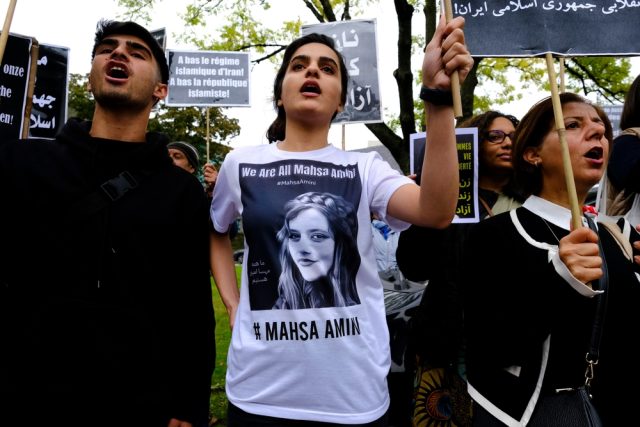
Iran is in revolt. Women have taken to the streets, a desperate cry against the theocratic dictatorship of the Ayatollahs, who have progressively compressed all fundamental rights.
The protest was triggered by the death of 22-year-old Kurdish-Iranian Masha Amini, who died on 16 September in hospital three days after being arrested by the ‘morality police’. According to various sources, the young woman was viciously beaten because she had worn her Islamic veil inappropriately, i.e. leaving some locks of hair visible.
According to the Reuters news agency, 83 people have already died in the protests, including some children. Among these people there is a 20-year-old girl, Hadis Najafi, who was killed by six shots fired by the Iranian police while protesting. The image of her blond hair pulled back into a tail has become a symbol of freedom.
For Iranian President Ebrahim Raisi, the protests are ‘led’ by the West, which has been hostile to Iran since the beginning of the Islamic Revolution.
In 1979, the monarchy of Mohammad Reza Pahlavi, the last Shah of Persia, fell under the blows of religiously inspired and Marxist forces, gathered around the charismatic Iranian imam, Ayatollah Ruhollah Khomeyni.
The fledgling republic was immediately permeated by the radical and fundamentalist Shiite Islamic religion. A State was created with two heads, two distinct ‘authorities’: one purely administrative, run by a President and a Parliament, both formally elected, although there are many doubts as to the truly democratic nature of these elections; the other, defined as ‘religious authority’, the true centre of political power, of which Khomeyni himself immediately became the leader. It is the religious authority that dictates the rules to be followed, based on the precepts and principles of the Koran and Sharia.
The new regime suspended some of the fundamental freedoms guaranteed in free states, such as freedom of religion and the press. In addition, the wearing of the veil was imposed on women and marriage was permitted from the age of nine. Severe punishments were introduced for those who did not respect Islamic law, even going so far as to impose the death penalty for ‘crimes’ such as adultery.
Some pictures of Iranian women before the Khomeinist Revolution are famous all over the world: young schoolgirls dressed ‘Western-style’, with their hair down, their coloured skirts, their faces made up. Images that more than 40 years later clash with the portrait of the current female condition, one for which a young girl loses her life for incorrectly wearing the hijab.
In the streets, these days, there are also many young people. They are no longer willing to live in a country in which time seems to stand still.
Michael Mandelbaum, Professor Emeritus of American Foreign Policy at the School of Advanced International Studies at Johns Hopkins University, wrote in 2017: “Of the states that emerged from the twentieth century’s three great revolutions – in Russia in 1917, China in 1949, and Iran in 1979 – the Islamic Republic of Iran alone endures in something close to its original form. Modern-day Iran is thus a historical relic; but it is also a contemporary dynamo. Its revolutionary regime is increasingly sclerotic and beleaguered”.
It is, therefore, a duty of the Western world not to turn its back on a protest that comes from the bottom. It draws its lifeblood from the suffering of millions of people who live deprived of their freedom; it is also a duty of the European Union to do something to encourage change in a country where people die for showing a lock of hair.
The ECR Group has asked the European Parliament to work on an urgent resolution condemning the death of Masha Amini and the violent repression of the protests, even going so far as to imagine reacting firmly and concretely by imposing sanctions on Iran.
With the war in Ukraine on Europe’s doorstep and the energy crisis looming in the months to come, the situation in Iran further destabilises an already precarious international stability.



 Subscribe
Subscribe